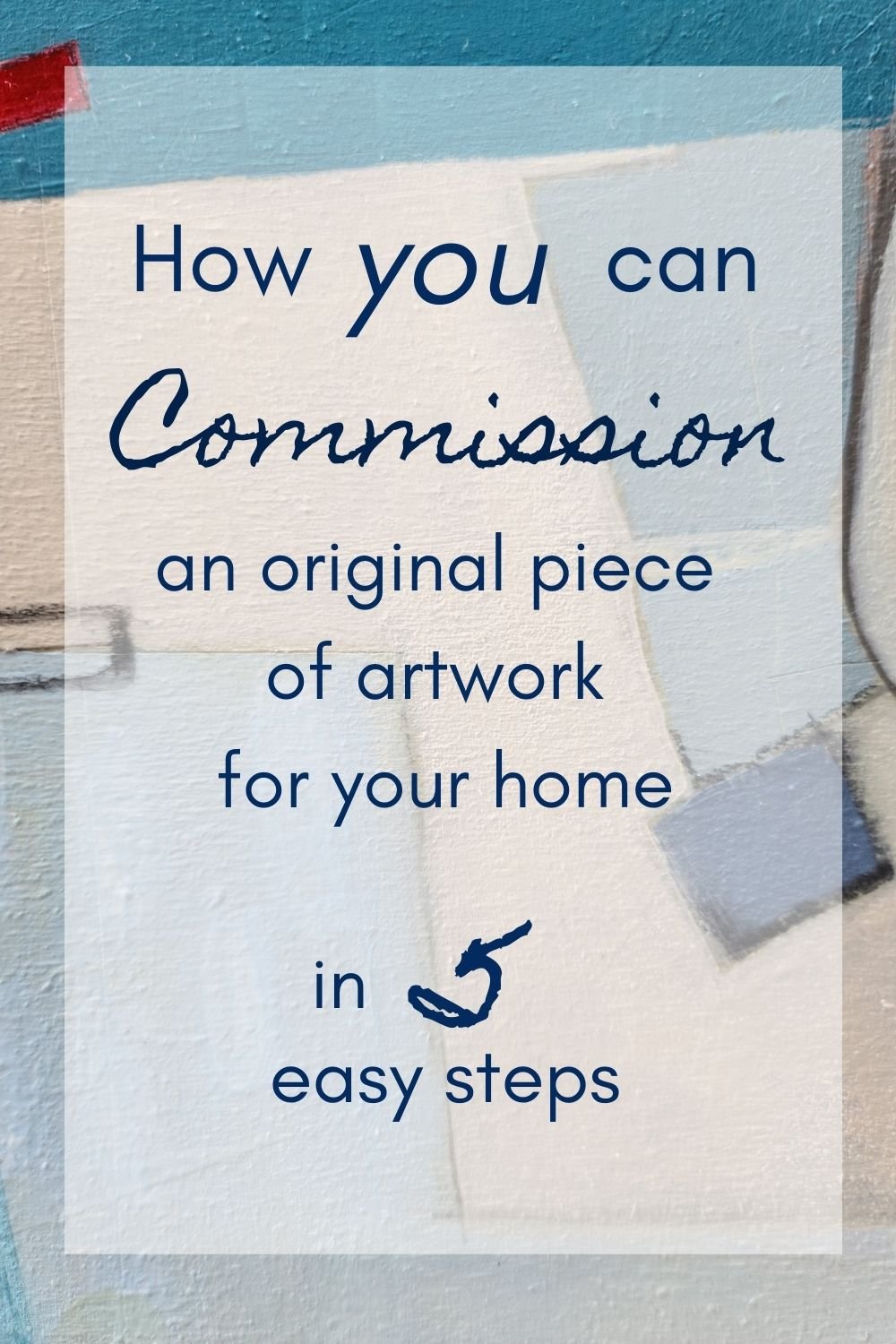How to commission an original piece of art for your home
Commissioning work is a lovely way for you to own an original piece of art to which you feel a special connection!
Familiarize yourself with a typical commission process outlined in these five steps, and you’ll be ready for a highly rewarding experience.
Step 1: Approach the artist to ask whether they take commissions
You’ve found an artist whose work you love, so the first step is to contact them to ask whether they take commissions. Many artists will be more than happy to work with a buyer to create a piece specially for them (but be aware that some may not accept commissions, depending on their time or other considerations). Be prepared to tell the artist why you would like to work with them, specifically; and have an initial idea of size and a rough timeline, for their consideration. You can ask the artist what they would typically charge for similar work. At this point, you are both deciding whether to proceed.
Step 2: Discuss commission details and agree on a process for its completion
You’ve decided to go ahead, so a more detailed discussion is in order now. Now is the time to articulate as specifically as you can about what you want - you might have reference images to show the artist, colour preferences, a specific subject. It can be very helpful to look at examples of the artist’s work, to point out what attracts you – perhaps the colour palettes they use, or the emotional tone you feel in their work. The more understanding the artist can gain about your expectations, the more likely you will be happy with the result.
At this point you’ll also discuss the timeline for completing the piece, and how and when you will receive updates on the work and opportunities to view it.
Step 3: Prepare and sign a contract
The artist should prepare a contract for both of you to sign, keeping the relationship professional and helping avoid misunderstandings. This may look like a formal contract, or it may be a less formal email capturing the details of what you and they have agreed.
The contact will include a summary of what you’ve discussed, including the size and materials for the work, timelines, and the process for viewing and approving the work.
As well as stating the total cost for the work, there may be a schedule of payments, including a deposit before work commences. The deposit may be up to 50% of the total cost, as an indication of commitment and allowing for the purchase of materials.
Finally, the contract should state what will happen if you are not happy with the final work. Some contracts provide for a partial refund, less the deposit; others may allow you to apply the balance to an alternative piece of work by the artist. This is an unlikely scenario if you’ve communicated well from the start, but having it clearly addressed allows both of you a degree of assurance and ease.
Step 4: Your role in the creative process
Once the contract is signed, work can begin. Depending on what you have agreed with the artist, you might be invited to view the work as it progresses. Some artists are happy to do this quite frequently, others may prefer to show you only as the work is nearing completion. Seeing your commissioned art before it is finished can be a bit nerve wracking for you and for the artist. It may not look the way you’d imagined, so do allow yourself some time to warm up to the emerging piece. If you have concerns about the direction the work is taking, it’s important to communicate with the artist as soon as possible, increasing the chances that the artist can make the changes you’d like.
When the work is substantially finished, the artist will ask for your approval (and possibly a second payment). At that point, finishes such as varnish are applied and the work is completed.
Step 5: Take delivery and install your new artwork
Your art will arrive ready for installation, and you will now have the fun of deciding where it is going to go! If you and the artist live in the same area, they may deliver the work in person, and even help you to install it, if you’ve requested that. Upon delivery, the final payment is normally due.
Congratulations - you are now the owner of original, commissioned artwork! Sit back and enjoy the deep satisfaction of having played an important role in its creation.
